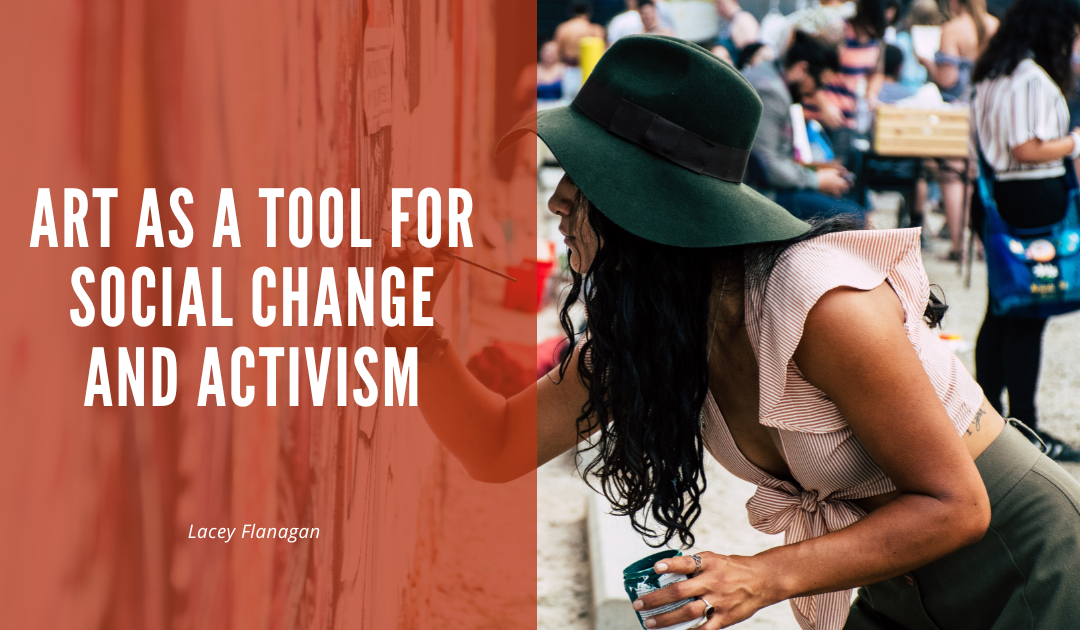Art has always been a powerful medium for challenging the status quo and advocating for social change. By tapping into emotions, sparking dialogue, and fostering empathy, art transcends language and cultural barriers, making it an effective tool for activism. Across history and into the modern era, artists have used their work to confront injustice, amplify marginalized voices, and inspire movements that reshape society.
Throughout history, art has served as a mirror to societal inequities and a call to action. The Mexican muralist movement, led by artists like Diego Rivera and David Alfaro Siqueiros, vividly depicted the struggles of the working class and the injustices of capitalism. These large-scale murals, painted in public spaces, made art accessible to all, turning walls into platforms for revolution. Similarly, Pablo Picasso’s iconic painting Guernica captured the horrors of war, specifically the bombing of a Basque village during the Spanish Civil War. The stark black-and-white imagery and fragmented figures conveyed the anguish of conflict, becoming a universal symbol of anti-war sentiment.
Art also plays a crucial role in civil rights movements. During the American Civil Rights Movement, photography, music, and visual art documented the struggles and triumphs of activists. The photography of Gordon Parks, for example, captured the dignity and resilience of African Americans living under segregation. Meanwhile, protest songs like Nina Simone’s Mississippi Goddam and Billie Holiday’s Strange Fruit used music as a rallying cry against racial violence and inequality. These works resonated deeply, galvanizing support for the movement and cementing art’s role as a catalyst for change.
In more recent years, art has embraced digital platforms to amplify its impact. The Black Lives Matter movement, for instance, has seen a proliferation of street art, murals, and digital illustrations that memorialize victims of police brutality and celebrate Black resilience. Public artworks like the Black Lives Matter street mural in Washington, D.C., serve as both a tribute and a visual statement of solidarity. Social media has further amplified these messages, allowing artists to reach global audiences and foster collective action.
Art also provides a voice to marginalized communities, enabling them to reclaim their narratives and challenge stereotypes. Indigenous artists, for example, use their work to highlight issues like land rights, cultural erasure, and environmental destruction. The works of contemporary artists like Tania Bruguera and Ai Weiwei address themes of censorship, migration, and human rights, forcing viewers to confront uncomfortable truths. By centering the experiences of the oppressed, these artists challenge dominant narratives and encourage greater empathy and understanding.
Artistic activism is not limited to visual mediums. Theater, literature, and performance art have also been powerful tools for change. Plays like Lorraine Hansberry’s A Raisin in the Sun and performances like Marina Abramović’s endurance art pieces provoke reflection on societal norms and personal responsibilities. These forms engage audiences on an emotional level, compelling them to question their own roles in perpetuating or challenging injustice.
The intersection of art and technology has opened new possibilities for activism. Digital installations, virtual reality experiences, and interactive media allow audiences to immerse themselves in the issues at hand. Projects like The Enemy, a virtual reality experience that brings viewers face-to-face with soldiers from opposing sides of conflicts, foster empathy by humanizing those involved. These innovations highlight art’s ability to evolve with the times while maintaining its transformative power.
Art’s impact on social change lies in its ability to connect with people on a visceral level. Unlike statistics or policy arguments, art evokes emotions that inspire action and solidarity. It creates spaces for dialogue, encourages reflection, and empowers individuals to envision a better future. As society continues to face pressing challenges, from climate change to systemic inequality, art remains an indispensable force for advocacy and transformation. By harnessing its power, we can continue to push for a more just and equitable world.

